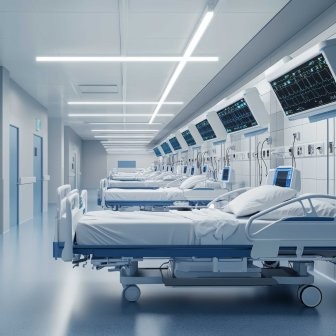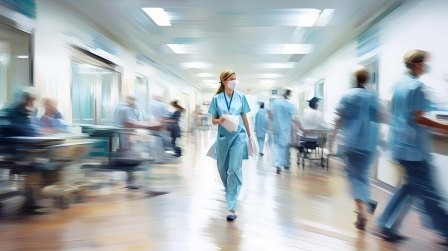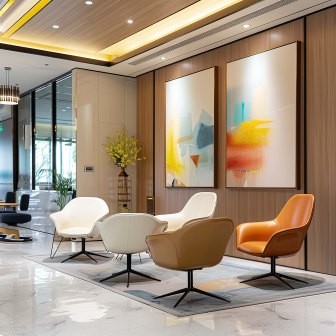

Printable PDF version
Subscribe to our newsletter
Biophilia in Building Design
Healthcare Facility Design Post-Covid
Tariffs and Other Changes
Construction
Management Specialists
Los Altos, CA
(650) 386-1728
Orinda, CA
(415) 981-9430
Sacramento, CA
(415) 872-0996
San Diego, CA
(858) 886-7373
Los Angeles, CA
(424) 343-2652
Seattle, WA
(206) 571-0128
Phoenix, AZ
(408) 868-6326
Portland, OR
(415) 359-5207
Dublin, Ireland
+353 86-600-1352 (Europe office)
www.TBDconsultants.com
Biophilia is a word that is springing up more frequently recently, and in this article we look at how it can be implemented in construction and what its benefits are.
Healthcare Facility Design Post-Covid
The sudden spread of Covid-19 in 2020 put an unexpected load on the healthcare system and, while hospitals and other medical facilities adapted remarkably quickly and effectively to the new challenges, the pandemic highlighted a number of areas that could use improvement.

The number and type of patients that hospitals had to handle suddenly changed, and there was a need to adapt existing facilities rapidly. That led to a flurry of alteration work as hospitals had to adapt under pressure, and it has spurred the use of modular and demountable construction methods for new construction, in order to make it easier to adapt to future unexpected events. The use of portable HEPA recirculation pumps and other easily deployable equipment makes it easier to adapt the building to changing needs. If a patient is going through a series of different treatments, portable equipment may mean that the patient does not have to be moved to different rooms, making their hospital stay more comfortable. Social distancing to minimize the spread of the virus was implemented during the pandemic, but with new construction, if it is possible to create a unidirectional flow for people through the building, that should be even more effective at minimizing the potential for cross-infection. Of course, many supermarkets tried to implement such a one-way system in their aisles with only limited success because people tended to ignore it.

The ease with which the SARS-CoV-2 virus could spread emphasized the need for improved flow-control of air throughout the buildings. Improving air filtration and increasing the number of air changes helped remove pathogens as efficiently as possible before they could spread the infection, and the use of safe UV (indirect UVC) lighting helped keep pathogen numbers low. Humidity levels can also affect how well microorganisms survive. The use of negative air pressure and cleanroom technology for isolation rooms and the like, became more common to stop contamination spreading to other areas of the building. There may be a need to switch between positive and negative air pressure for a room, depending on whether you need to prevent a pathogen entering the room or getting out.
The use of technology, with motion sensors and voice activation being used for lighting, to open and close doors, activate faucets, hand sanitizers, etc., and the use of anti-microbial materials minimized the likelihood of infection spread through contaminated surfaces. Technology has also developed in its abilities to analyze and optimize patient care needs and assist doctors in assessing the results of X-rays, CT scans, and the like. The need to minimize the spread of Covid led to a rapid increase in the use of telemedicine, with video calls and phone calls becoming the preferred method of consultation, and that has continued as a common practice. Such telemedicine also helps somewhat to alleviate the shortage of available doctors and other healthcare practitioners. The use of websites and apps to enable pre-visit questionnaires to be completed and online check-in to occur has also become common.
The concept of biophilia, mentioned in our leading article, has naturally become part of the design of new hospital construction, since it centers on the wellness of the occupants. Designated walking routes on the site, to encourage a bit of exercise while leading patients and visitors through 'healing gardens' and other landscaped areas, has also become a feature. Resilience, adaptability, and the health and comfort of patients and staff have been among the lessons learned from the pandemic.

The pandemic resulted in the emergence of local Covid-testing clinics that frequently made use of vacant commercial properties. That kind of local facility has been morphing into local boutique clinics, providing longer and more readily available appointments while specializing in particular healthcare needs, such as weight-loss, acupuncture, or women's health, and the list is growing. These facilities need to meet all the same kind of requirements against infection spread, etc., as regular healthcare facilities do, but they present more of the look of a hospitality or health-spa unit, with plush furniture and bright colors.
Tariffs have become a big talking point recently, and here we take a look at their impacts, and impacts of some other policies of the current administration, on the construction industry.
Design consultant: Katie Levine of Vallance, Inc.